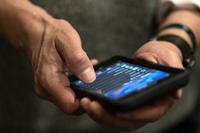Why Build an Emergency Fund
This is a sound choice. Having an emergency savings fund may be the most important difference between those who manage to stay afloat and those who are sinking financially. That's because maintaining emergency savings of $500 to $1,000 allows you to easily meet unexpected financial challenges such as:
- Repairing the brakes on your car
- Buying your child a new pair of needed shoes
- Replacing a broken window in your house
- Paying for a visit to the doctor when your child has the flu
- Covering the dental expense of filling a painful cavity
- Paying for a parking ticket
- Flying to visit a sick parent.
The emergency fund not only allows you to cover these expenses, it also gives you the -- peace of mind -- that you can afford these types of financial emergencies. Not having an emergency savings fund is an important reason that many individuals borrow too much money at high interest rates. For example, with emergency savings, Americans probably would not have to take out $2 billion a year in payday loans at interest rates that average 300 to 500 percent.
Where to Keep Emergency Savings
It's usually best to keep emergency savings in a bank or credit union savings account. These types of accounts offer easier access to your money than certificates of deposit, U.S. Savings Bonds, or mutual funds.
But not too easy. Keeping your money in a savings account makes it much less likely that you will use these savings to pay for everyday, non-emergency expenses. That's why it is usually a mistake to keep your emergency fund in a checking account.
You may well need at least $100 to open the savings account and a $200 minimum balance to avoid monthly fees. In most areas, however, there are several financial institutions with lower minimums. Also, banks and credit unions may waive the minimums if you have other accounts at that institution. If you become a Saver in a local America Saves campaign, a number of participating financial institutions will make available to you low- or no-minimum savings accounts. Check the America Saves website for information about local campaigns.
How to Find Money to Save
There are many places to find money to save. Start with the loose change that many people accumulate. Americans typically save more than $100 in loose change each year. Use this change to open and grow a savings account. If you receive a tax refund or Earned Income Tax Credit, use a portion of this money to begin or increase savings. Since the Tax Credits average nearly $2,000, you may be able to open a savings account and still have plenty mof money to pay off debts or cover other expenses.
Try to deposit money saved by cutting back on small, unnecessary expenditures. The America Saves "Build Wealth Not Debt" pamphlet and America Saves website list more than 20 ideas for reducing spending. These ideas range from packing a lunch, to switching from daily lattes to daily coffees, to not bouncing checks.
Building an emergency fund may be easier if you involve your whole family in meeting this challenge. After you've explained the importance of emergency savings to your spouse or children, they may even help build the account. And, they will be more likely to understand why it's more important for you to increase these savings than to pay for expensive gifts at birthdays or Christmas.
Another way to accumulate the $500 to $1,000 of emergency savings is to ask your bank or credit union to automatically transfer funds from checking to savings monthly. Automatic savings is the easiest savings. What you don't ever see, you may never miss.
MilitarySaves.org -- a division of America Saves -- is a national campaign involving more than 1,000 non-profit, government, and corporate groups that encourages individuals and families to save and build personal wealth. Military Saves is part of the DoD Financial Readiness Campaign.








